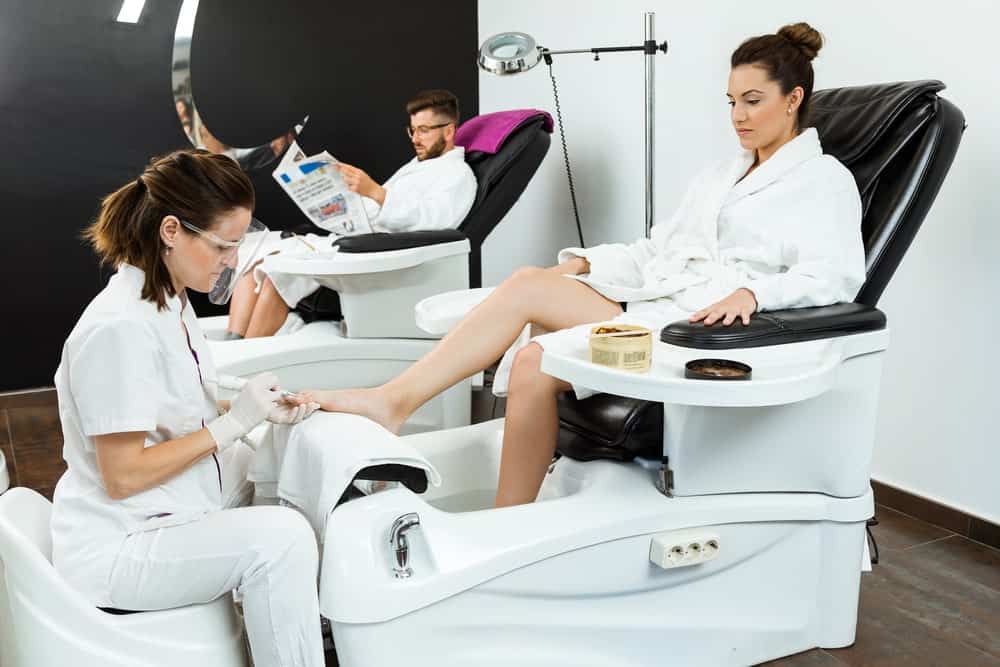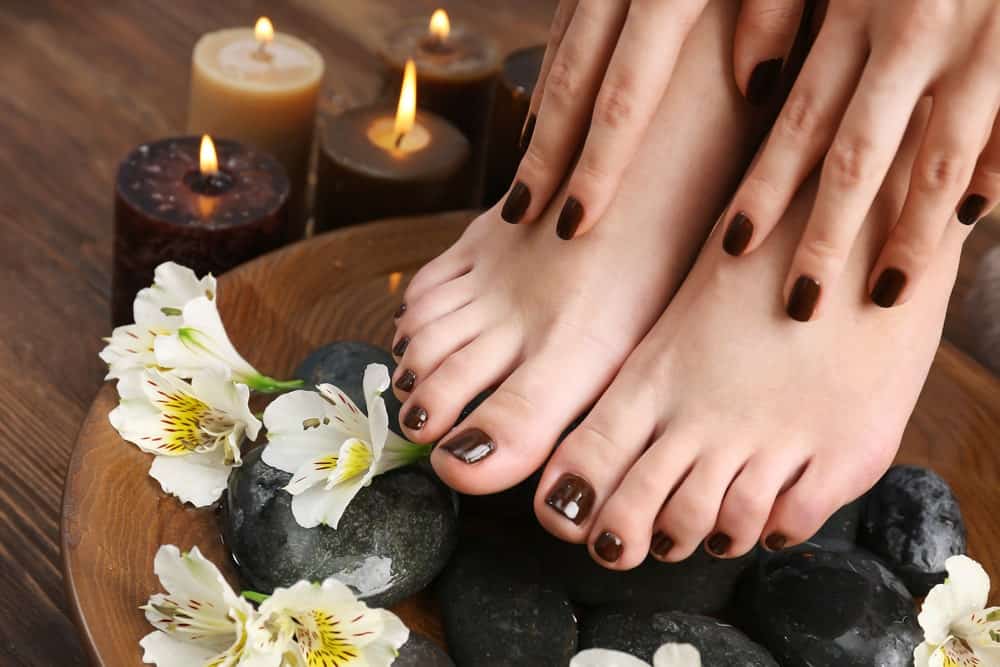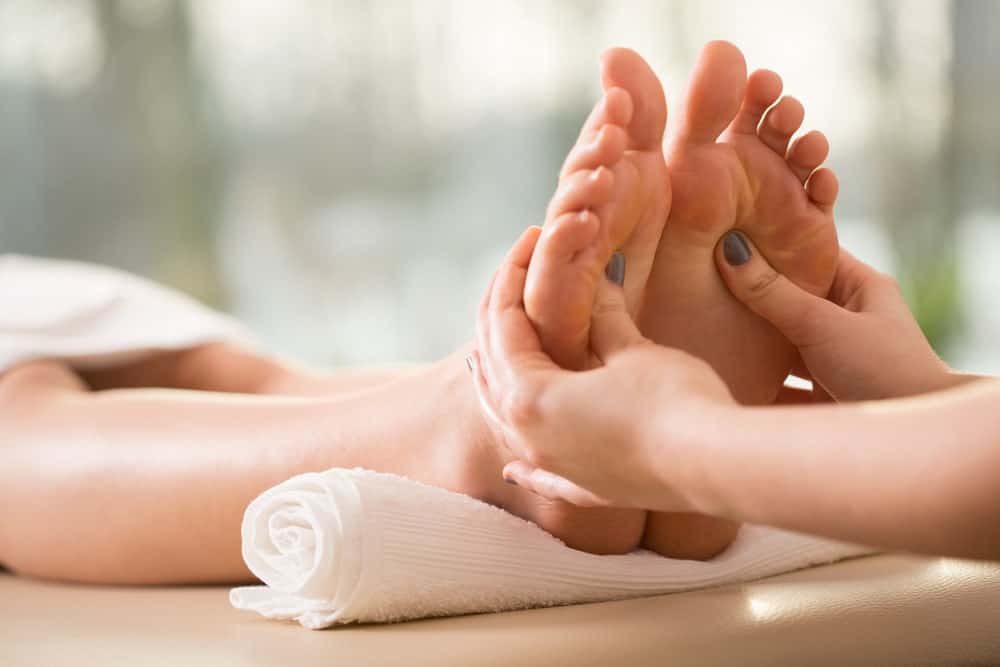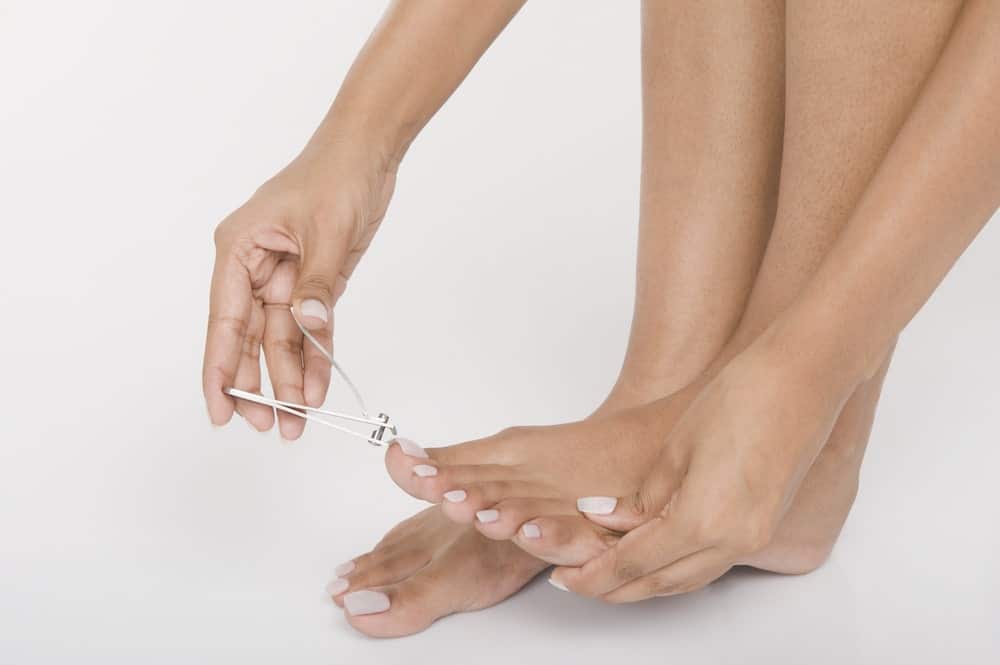Are you concerned about what to do before getting a pedicure? Here are six things everyone should do before getting a pedicure, and six things you should never do before you go to the foot care salon. But first, let’s review a basic fact about pedicures.
Pedicures feel good. It’s nice to pamper your feet. And while the steady-handed among us could give ourselves pedicures as easily as we could give ourselves manicures, the simple fact is that it is hard to stretch out and trim and paint your toenails.
If you are going to roam around socks-free with your tootsies out for the world to see, you really want them to be professionally pedicured. Plan a pedicure soon. Just be sure to pay attention to these six things you should do before a pedicure and six things you should not.
The most important thing to do before you get a pedicure is…
What’s the most important thing to do before you get a pedicure? Make sure you choose a salon that feels right!
Pedicures take about four times as long as manicures. That’s a long time to feel uncomfortable if you feel so awkward sitting next to the couple getting a couple’s pedicure that you want to tweet #ThirdWheel #ThisIsAwkward.
You want to be sure you are able to communicate with your technician so you can tell them, “Thank you, but I really don’t want nail art on my big toe.” Maybe you want to patronize a nail salon where you understand the controls for the massage chair. Or maybe you just need to pick out your favorite shade of toenail polish (and bring it with you) before you go to the salon before you look down and realize it is too late to change.
Every pedicure should be a luxurious experience. Every pedicure should also be safe. That requires a little homework before your appointment.
Five more things you should do before your pedicure.
You may not be able to do all of these things before your first pedicure at a nail salon, but don’t give a salon repeat business unless it meets your high standards.
Be fussy about foot baths.

The first time you visit a nail salon, get there just a little early. You want to make sure the technician sanitizes every foot bath basin after every client. The sanitation cycle takes at least 10 minutes for every client.
If possible, look for a nail salon that uses “pipeless” foot baths. These footbaths look a little like feet-sized hot tubs on wheels. The technician fills the device with water for each customer. The foot bath then warms and aerates the water with Jacuzzi-like jets. The aeration of the water kills bacteria that could be lurking in plumbing, and the whirlpool motion of the water is relaxing for your feet.
Make sure your salon is well-lit and well-ventilated.
A nail salon that is dark and smells musty is a reason to turn around and go right out the door. Some cities require nail salons to have dedicated ventilation ducts for each manicure and pedicure station. You don’t want to be breathing in other people’s germs during your relaxing pedicure session.
Consider a soakless pedicure.
Most pedicures begin with a nice, long soak for your feet in warm water. But some nail salons will wrap your feet in hot steamed towels instead.
Diabetics need to avoid soaking their feet. Counterintuitively, soaking the feet causes the skin to dry out. Tiny cracks in the skin in diabetic feet admit bacteria that find a “sweet” environment to grow and cause infections. Foot infections in diabetics can require hospitalization and even amputation. It’s best to take sensible measures to avoid them.
If you have a weak immune system, you probably should avoid foot baths and ask for heated moist towels. People who are on chemotherapy or who have certain chronic infections tend to pick up infections with bacteria that cause boils, blisters, and skin abscesses that may be difficult to treat with antibiotics. These Mycobacteria form films that have to be scrubbed away, but laundering towels kill them.
Sometimes the reason to avoid soaking is keeping other clients safe. People who have open cuts or obvious infections on their feet should not be allowed to pass them on. And even if you have healthy feet, soaking causes your nails to expand. If the salon applies nail polish while your toenails are fully hydrated, the polish may crack as they return to normal size.
Either way, soakless pedicures offer safety, and heated towels on the feet can feel just as good.
Look for a nail care technician who is also a reflexologist.
Who doesn’t love a good foot rub? Reflexologists do much more than just rub the feet, but everything they do is relaxing (well, if you aren’t ticklish). Reflexologists report that their treatments increase circulation, promote relaxation, relieve aches and pain (especially tendonitis), lift depressed mood, alleviate swelling, and make falling asleep easier. That’s a tall order for a pedicure, but many people swear by their reflexologists, so why not give it a try? Reflexology is usually available at full-service spas.
Bring footwear appropriate for the weather.
It’s ideal to wait eight to twelve hours after a pedicure before putting on shoes and socks. You can’t wait at the salon that long, so it helps to bring some “footwear” that can help you deal with your walkout to your car and your walk back into your home in freezing cold weather. (In the summer, flip-flops are fine.)
After your pedicure, be sure to spend 10 minutes in the blow-dry booth to make sure your toes are completely dry. Dab them with some cuticle oil and gently wrap them in plastic wrap or plastic bags before putting on loose socks and shoes. Be sure you are wearing flats, not heels, because added height places added pressure on your toes.
Now that we have looked at the six “do’s” to prepare for a pedicure, let’s take a look at your six “don’ts.”
Six things you should not do before your pedicure.
The maximum no-no for getting ready for your pedicure may be something you never even considered. Here it is:
Don’t even think about getting a fish pedicure.
Fish pedicures aren’t just, well, gross. They are also dangerous. In many states they are illegal.
What is a fish pedicure?
During a fish pedicure, also known as a fish spa, nail salon patrons dip their feet into a tub filled with “doctorfish,” a species of tropical fish from Western Asia also known as Garra rufa. The doctor fish eat dead skin off the client’s feet and toes. This leaves the lower layers of living, richly colored live skin exposed. Most people who have the procedure describe a variety of sensations ranging from soothing massage to tingly bites.
What’s the problem with a fish pedicure?
Let’s think about this a moment. Where exactly do fish go to the bathroom? Why, in their tub, course! Do you really want to stick your feet in a tub of hungry fish, water, and fish poop?
That’s not the only problem. There have been numerous reports of serious infections, some of them requiring amputations of all the toes after nail salon clients indulge in a fish spa.
Doctorfish often carry a kind of bacteria known as Mycobacterium marinarum. In the same general grouping of bacteria as those that cause tuberculosis, these bacteria can cause infections that work their way through the skin to the bones of the toes and feet, at which point the only safe treatment is amputation.
(The writer of this article once had a similar infection of his toes, acquired while wading through floodwaters. He was advised to have his feet amputated. He replied to his doctors that he was not a salamander. They saved his toes and feet with intravenous antibiotic therapy, requiring him to spend six weeks in a hospital bed and costing over $300,000.)
Fish pedicures pose no danger if you never have them. You probably do not want to patronize a salon that still offers them.
Don’t shave your legs for at least three days before you have a pedicure.
Tiny nicks and cuts in the skin can let bacteria in. The risk of strep or staph infection of the skin caught in a nail salon is very low but not zero.
Don’t paint or polish over discolored toenails.
Discolored toenails are infected. Paint and polish trap fungus infections inside the nail and make them harder to treat.
And don’t leave toenail polish on your toes forever. After about two weeks, it begins to flake and leave little white spots. It’s best to remove toenail polish before that happens. It’s OK to remove toenail polish just before your pedicure but you don’t have to.
Don’t round your toenails when you cut them.
Rounded toenails tend to create ingrown toenails as they grow back. Cutting your toenails straight across prevents pain and infection. Your best option is to get pedicures often enough that you can rely on your nail salon technician to maintain your nails.
Don’t cut your cuticles.
Cuticles are the thin tissue underneath your nails. Sometimes it can build up and become thick enough to lift a nail, but this only happens in extreme cases. Most of the time it is best to leave your cuticle alone and let it do its job of protecting the delicate skin underneath your toenails.
Don’t leave moisture between your toes when you bathe or shower.
The skin between your toes can benefit from moisturizers but not from water. Moisturizers go into the skin to reinforce ceramides that keep your skin strong but supple. Water provides a needed nutrient for fungal infections. Be sure to dry between your toes before you put on hose or socks.
And when you get to the salon…
When you get to the salon, don’t let your technician use a “foot razor” to remove dead skin. Pumice stones are safe, but razors can damage the skin and cause infections.
It’s also important to avoid callous peelers.
Callous peelers look something like vegetable peelers. They remove the dead skin over a callous with surgical precision.
The problem with callous peelers is that they are also surgically sharp. It is easy for an inexperienced technician or even for an experienced technician to have a bad day to slice off too much skin and leave a path for infection. There is no shortage of germs lurking in even the best-maintained nail salons that can infect open skin.
Most states have laws prohibiting the use of callous peelers in nail salons. They are fine at the podiatrists’ office, but you should not allow them to be used on your feet during a pedicure.
Don’t let your technician share emery boards. They cannot be sterilized. Make sure your technician is treating you with a new emery board, or, better yet, bring your own. You should make sure your technician is using fresh nail files, too.
We have given you a lot to think about, but you can find a pedicurist worthy of your trust.
There are a lot of things that can go wrong with a pedicure, but usually, everything goes right. Don’t be afraid to discuss anything you have learned from this article with the staff of your nail salon. And when they show that they can answer all your questions and meet all of your concerns, enjoy it!












